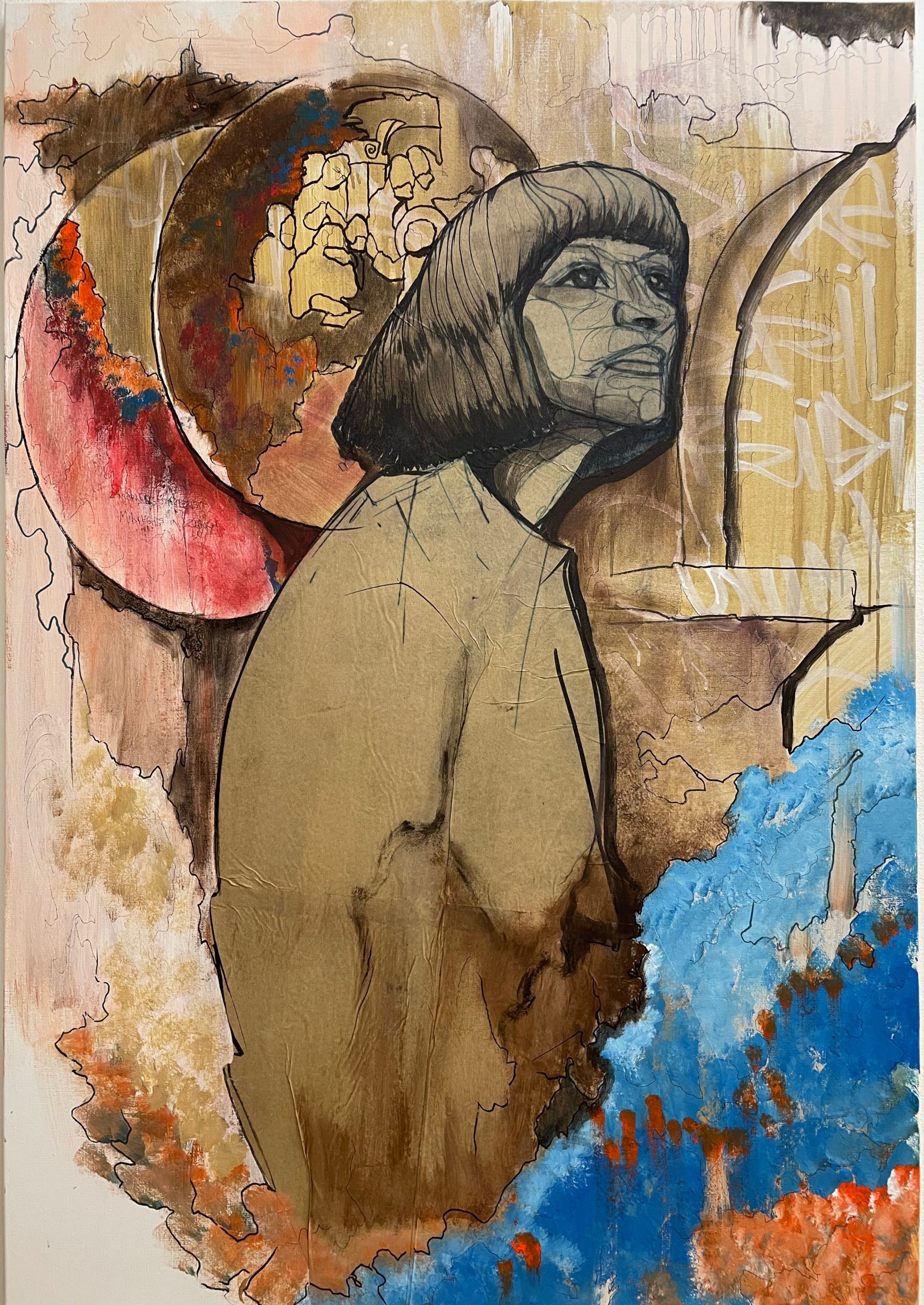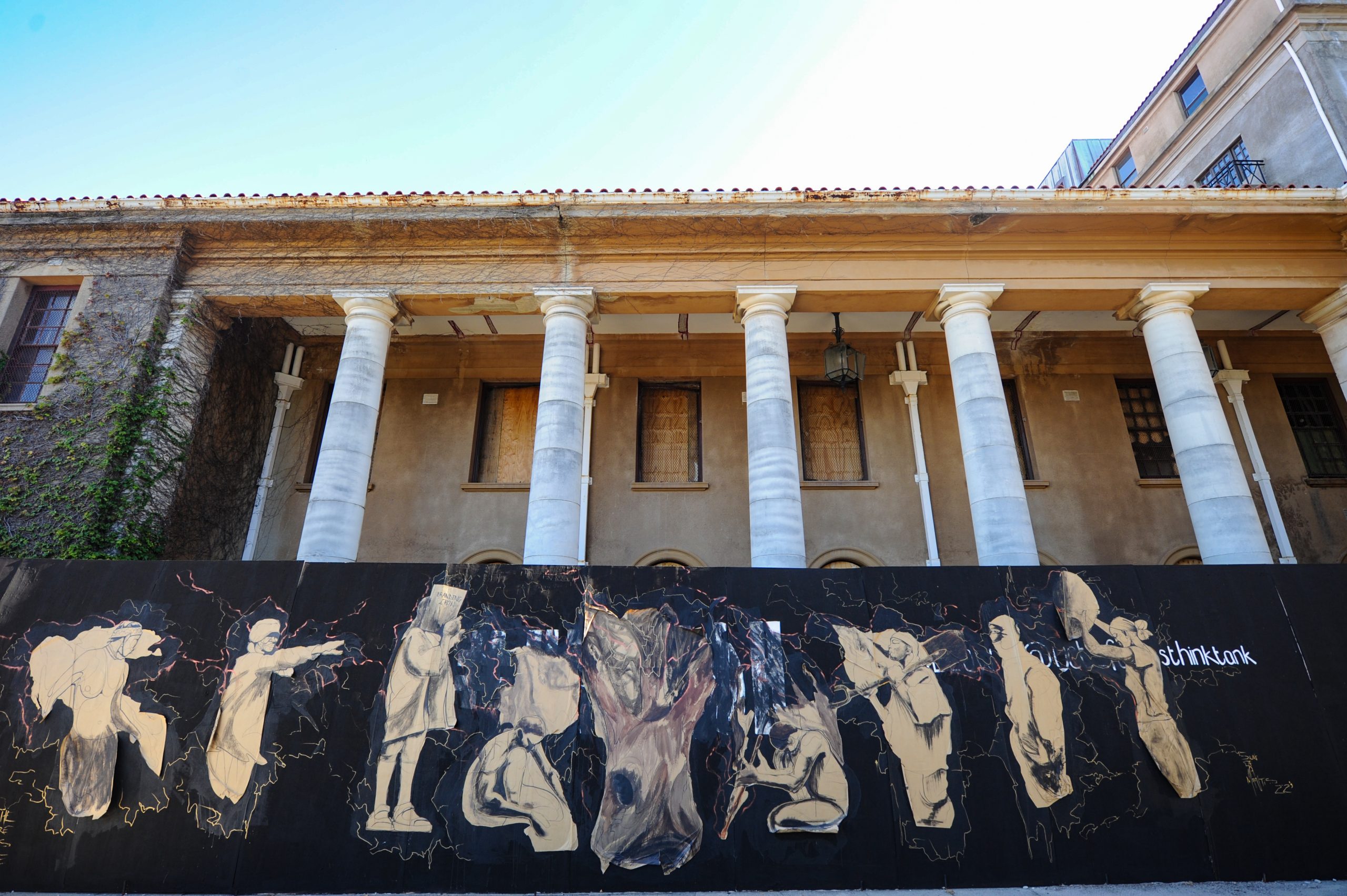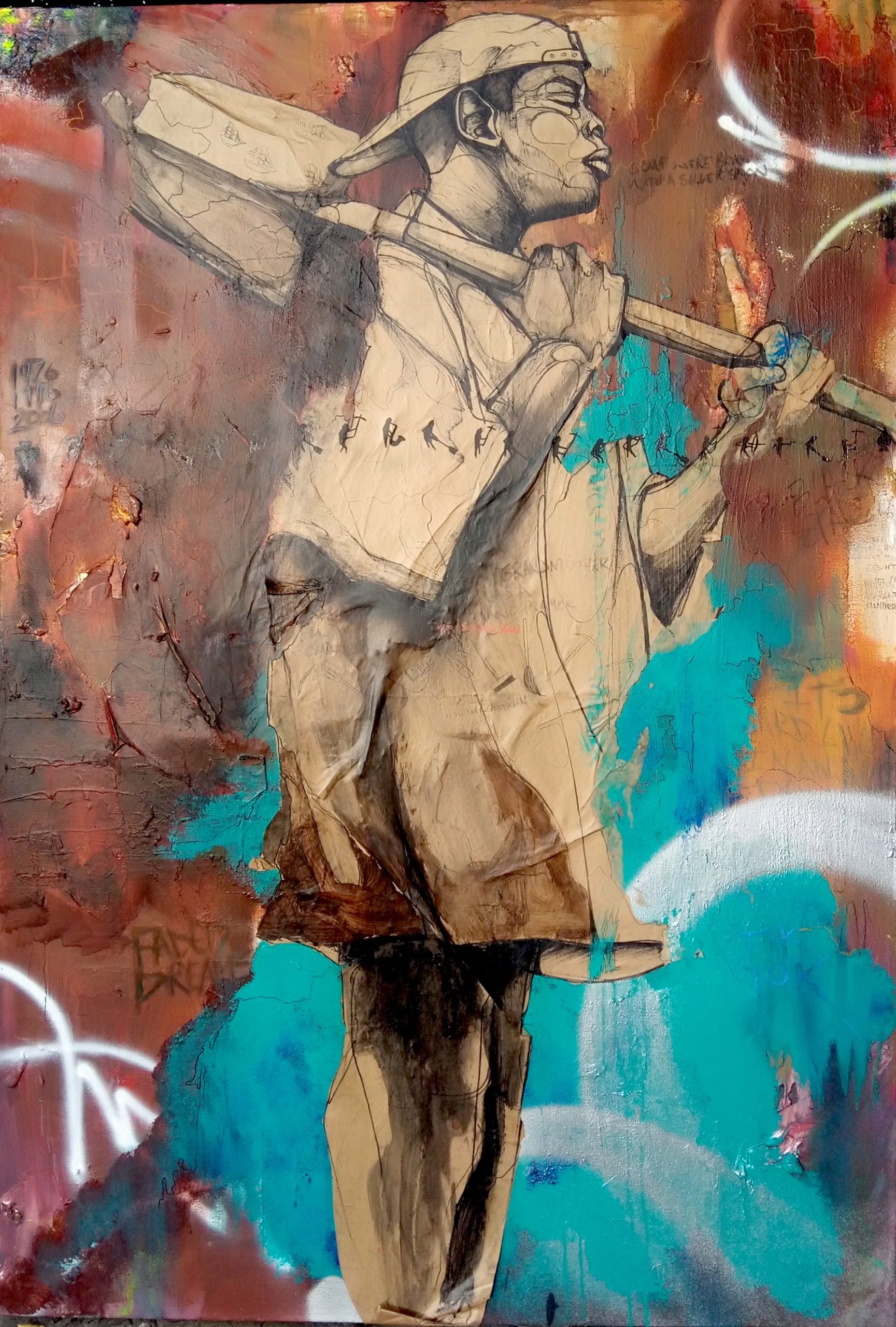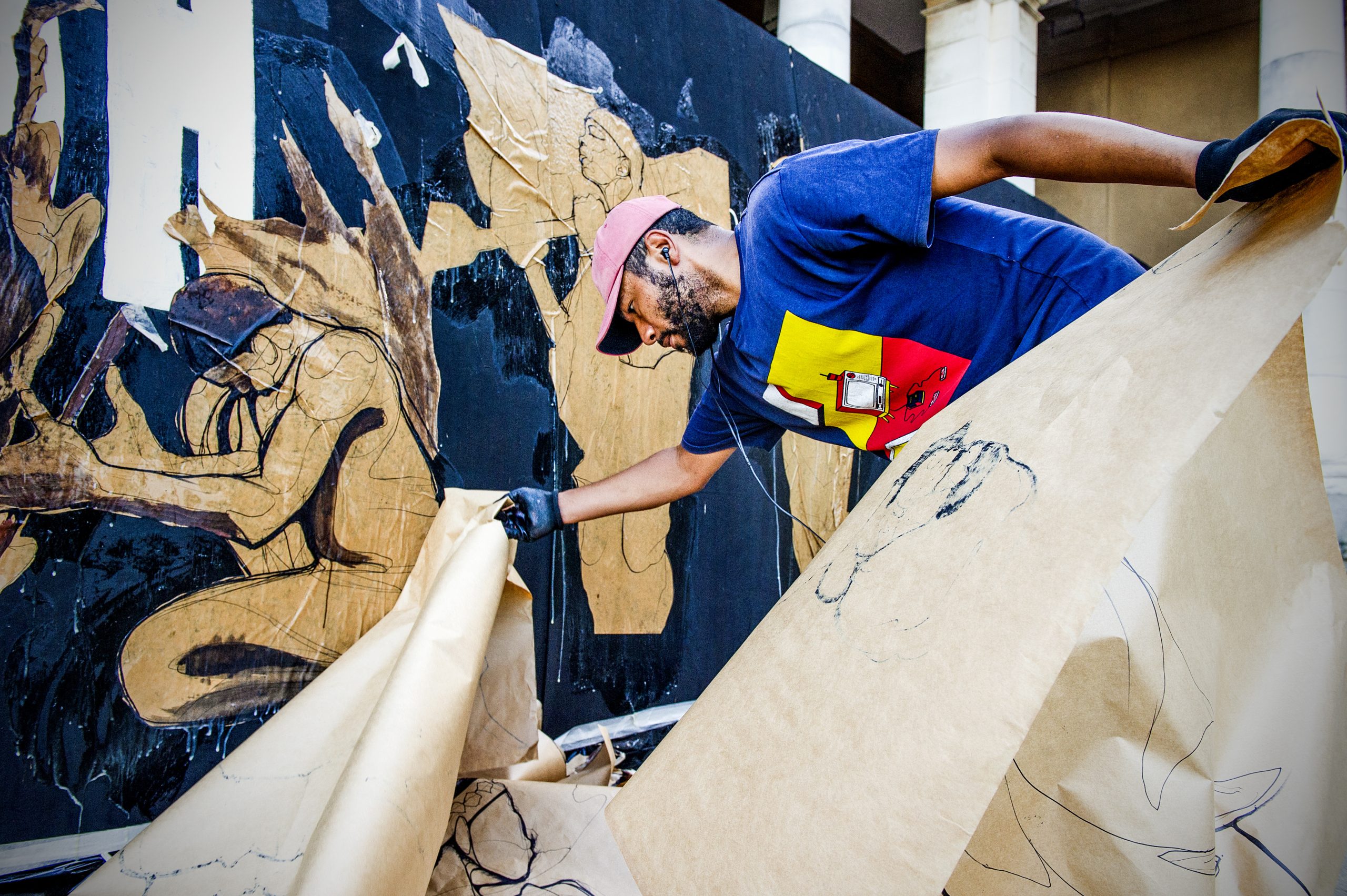Grant Jurius’ sonic composition Animal Skin, co-produced with the Lumpen station in Switzerland, is a progressive medley with fragments of conversation and snippets of the sonic cityscape. The work is arranged on a bed of persistent and low-frequency rumbling that crescendos into a contemplative and broody 19-minute-long melody. Sirens, laughter, drums, the clattering of objects bumping up against each other, a saxophone and a voice declaring; ‘I know that I wanted to be by the sea…’ — these are the sights and sounds that come alive and make up the multisensorial work which engages all aspects of feeling and perception.
Jurius is not just a brilliant sound artist, he paints, draws, makes murals and tells stories too. He is interested in the texture of things – the way things feel or look as if they might feel if touched. Through a mode that engages the visual, auditory, physical, associative, and subliminal, he constructs a world in which memory and experience are triggered. I had a lovely email conversation with the Cape Town-based artist about his process and why he makes the things he makes.

Grant Jurius, Jazz Is My Second Skin
Nkgopoleng Moloi: How would you define your practice?
Grant Jurius: My practice involves constant definition/redefinition through finding ways of looking at lost or shrouded narratives obscured by colonial frameworks. I narrow this down by the idea that we exist mostly in someone else’s definition of how the world is formed. I tend to look at myth-building as a way to deconstruct myths that become our reality. I tend to study design, architecture, wall surface + texture, art history, and global as well as indigenous cultures as a way to view the way the world is shaped through ideology, ritual and philosophy. I employ symbolism, codes, texture and sound points to trigger memory & experience.
Nkgopoleng Moloi: Can you tell us about the residency you did at Atelier Mondial in Basel in 2022? What work did you produce there and how are you reflecting on it now that you are back in the country?
Grant Jurius: The residency in Basel presented the opportunity to further develop an ongoing project that I’m working on called, Animal Skin. I created paintings that looked at wall textures, design and architecture as well as value in historical monuments in Basel and Zurich. I studied these textures to look for clues into the context, history and narrative of the space that I was experiencing. I also focused on South African artists who spent their time in exile in the 60s namely, Sathima Benjamin & Makaya Ntshoko, whose portraits I juxtaposed against the aforementioned textures to imagine their experiences within these spaces. In a way, the work points towards the experience of finding one’s way in the dark – in a foreign space but also mental health and the psychological effects of space. I wanted to engage all my senses through these experiences.
The series of paintings mentioned above was exhibited at Villa Renata gallery in Basel during my residency. Simultaneously, I collected field recordings while exploring these spaces. This practice mirrors the visual elements mentioned above as a way to study sound textures of spaces. These recordings resulted in a sound piece that is presented on Switzerland’s Lumpenstation experimental sound platform.

Photograph by Lerato Maduna
Nkgopoleng Moloi: Can you tell us about the intersection of the visual and the sonic within your work and how these influence each other?
Grant Jurius: As mentioned above, the sonic and visual are ways to interrogate the same questions, concepts and textures from different directions or through different mediums. I have always been immersed in both the visual and sonic. I look at this approach as a way to explore and experience space and its effect on the psyche — where and why we perform rituals within these spaces and how it forms our reality.
Nkgopoleng Moloi: A lot of your work takes into consideration ‘public space’ or happens in ‘public space’ — I’m interested in how you think about the spaces you interact with. What draws you to them and what are you ultimately hoping to leave them with?
Grant Jurius: Spaces are meant to be shared. What seems to be our most innate custom in relation to space is to share them with others; to perform rituals and shape our realities within them. Spaces also hold stories, both ancient and futuristic. In the ancient past reality was shaped by nature and its evolution. Now it is mostly shaped by our involvement with capitalism and colonialism. We can have a sense of where the world will end up in the future while still being overwhelmed by its mystery. I look for ritual and a sense of the spiritual in the mundane. But I’m also interested in the fantastical, through say design and its interaction with nature.

Grant Jurius, Animal Skin
Nkgopoleng Moloi: Can you tell us about the work that you made for “The Fire This Time” for the UCT WOAC?
Grant Jurius: The Fire This Time is a project in relation to the fires that spread from the mountain to the UCT campus and destroyed the huge Sarah Bartman library archive. The layers of context in this incident intrigued me and connected to themes that I am already engaged in.
The question of lost narrative in relation to education – questions of class, colonial structures as well as the loss of indigenous knowledge. I chose to paint imagery for a public installation that illustrated the indigenous ritual of fire building for the purpose of communal sharing – for warmth, food, and social and spiritual engagement.
I included images of indigenous people making a fire out of a bluegum tree which is one of the most invasive trees planted by colonial industrial corporations to invade indigenous vegetation. Most of the alien vegetation on the mountain and UCT campus have contributed to these fires and caused them to spread uncontrollably (as opposed to the more naturally controlled fires spread by indigenous vegetation)
My use of painting on paper which was pasted on the temporary “safety” wooden wall that barricades the entrance to the destroyed library, further hinted at these concepts. The physical nature and medium of the piece mean that the piece is eventually destroyed by weather and exposure. Along with this visual component I created a sonic piece which acts as a kind of soundtrack to this process.
This story is produced in the context of an editorial residency supported by Pro Helvetia Johannesburg, the Swiss Arts Council.

Photograph by Lerato Maduna



















































